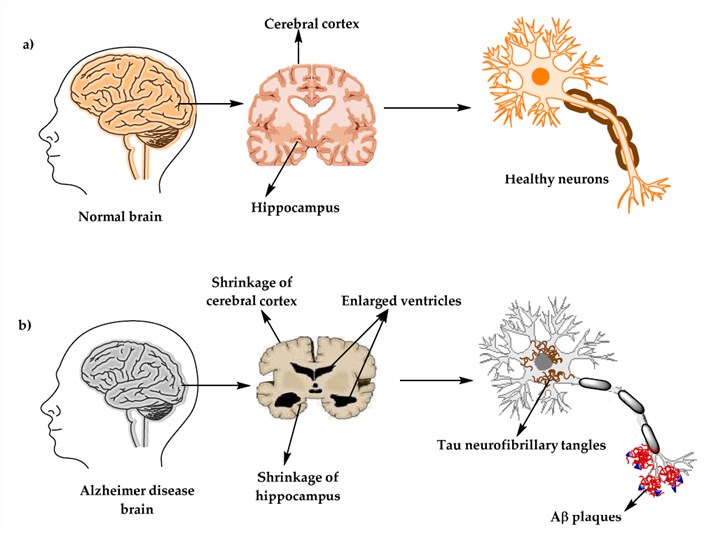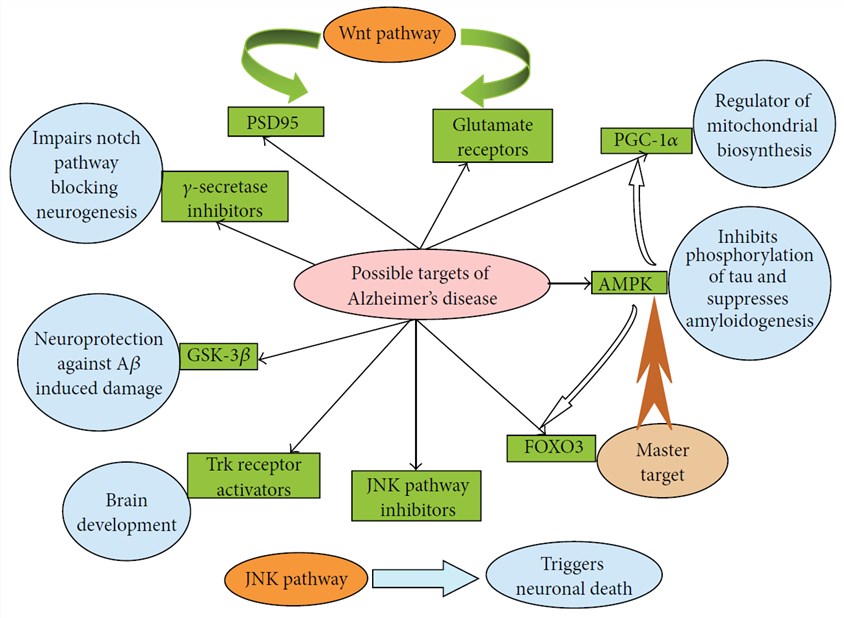NAA and Alzheimer's Disease
There is increasing evidence that autoantibodies to different molecular antigens are present in the serum or cerebrospinal fluid of patients with Alzheimer's disease (AD). They may be protective or pathogenic, but in any case, they may be considered valid diagnostic or prognostic markers of disease. At Creative Biolabs, we can be your one-stop-shop with our complete suite of natural autoantibodies (NAA) solutions.
Description of AD
AD is considered a neurodegenerative disease associated with multiple brain complications. It is the most common type of dementia, which is characterized by progressive disorders in cortical and hippocampal neuronal areas that result in loss of neuronal function and cell death. The clinical features are progressive memory, judgment, decision making, localization to the physical environment, and language impairment. The pathological features include neuronal loss, extracellular senile plaques containing peptide β amyloid, and neurofibrillary tangles, the latter consists of a hyperphosphorylated form of tau.
 Fig.1 The physiological structure of the brain and neurons in (a) healthy brain and (b) AD brain. (Breijyeh, 2020)
Fig.1 The physiological structure of the brain and neurons in (a) healthy brain and (b) AD brain. (Breijyeh, 2020)
AD Develop Pathway
Current concepts regarding the pathogenesis of AD include the participation of inflammatory and autoimmune components.
- Molecular Pathogenesis of AD
Molecular biology is of great significance to the study of the pathogenesis of any disease, and AD is no exception. Pathophysiologically, AD is complex, multifactorial, and of a heterogeneous condition indicating the accumulation of amyloid cerebral plaques and neurofibrillary tangles of abnormal tau protein, presence or absence of germline mutations, presence or absence of polymorphic susceptibility alleles, and so forth.
- Receptor Signaling in the Pathogenesis of AD
Different signal transduction and metabolic pathways involved in synaptic toxicity and neurodegeneration in AD are emerging as effective molecular targets, including the Wnt signaling pathway. The Wnt ligand interacts with its receptor on the cell membrane and subsequently activates a signaling pathway within the cell called the Wnt signaling pathway. There is increasing evidence that Wnt signaling plays an important role in regulating the formation and function of neuronal circuits. JNK signaling, a family of multifunctional signaling molecules, is activated under a series of stress conditions and is an effective inducer of cell death. More and more AD model evidence supports the involvement of JNK signaling in AD.
 Fig.2 Probable therapeutic entities acting on different receptor signaling pathways of AD. (Cheng, 2015)
Fig.2 Probable therapeutic entities acting on different receptor signaling pathways of AD. (Cheng, 2015)
NAA Services for AD at Creative Biolabs
- NAA Services for Anti-Aβ Antibodies
- NAA Services for Anti-Tau Antibodies
- NAA Services for Anti-NMDAR Antibodies
- NAA Services for Anti-glutamate Receptor Antibodies
- NAA Services for Anti-Nuclear Antibody (ANA)
- NAA Services for Anti-5-HT
- NAA Services for Anti-phospholipid Antibodies
- NAA Services for Anti-ATP Synthase β Chain
- NAA Services for Anti-AT1R
- NAA Services for Anti-oxidized Low-density Lipoprotein (oxLDL) Antibodies
AD Related Products at Creative Biolabs
| Target | Product Name | Cat. No. |
|---|---|---|
| Thyroglobulin (TG) autoantibody | Human Thyroglobulin (TG) Autoantibody (IgG) ELISA kit | NAK-063 |
| Alpha- and beta-subunits of the parietal cell H+/K+-ATPase autoantibody | Human alpha- and beta-subunits of the parietal cell H+/K+-ATPase Autoantibody (IgG) ELISA kit | NAK-051 |
| Angiotensin 2 Receptor 1 autoantibody | Human Angiotensin 2 Receptor 1 Autoantibody (IgG) ELISA kit | NAK-009 |
The discovery of blood-borne biomarkers to provide accurate and relatively non-invasive tests has been a major goal of research. Using human protein microarrays to characterize the differential expression of serum autoantibodies in AD and non-demented control (NDC) groups, scientists identified potential diagnostic biomarkers for AD. Creative Biolabs has established itself as an experienced producer of NAA services and products, we have expertise and capabilities in providing high-quality NAA solutions. If you are interested in our services and products, please contact us for more information.
References:
- Breijyeh, Z.; Karaman,R. Comprehensive review on Alzheimer's disease: Causes and treatment. Molecules. 2020, 25(24): 5789.
- Cheng, X.; et al. Molecular targets in Alzheimer's disease: from pathogenesis to therapeutics. BioMed Research International. 2015, 2015.
Related Services:
- NAA and Schizophrenia
- NAA and Lambert-Eaton Muscular Weakness Syndrome
- NAA and Amyotrophic Lateral Sclerosis
- NAA and Epilepsy

